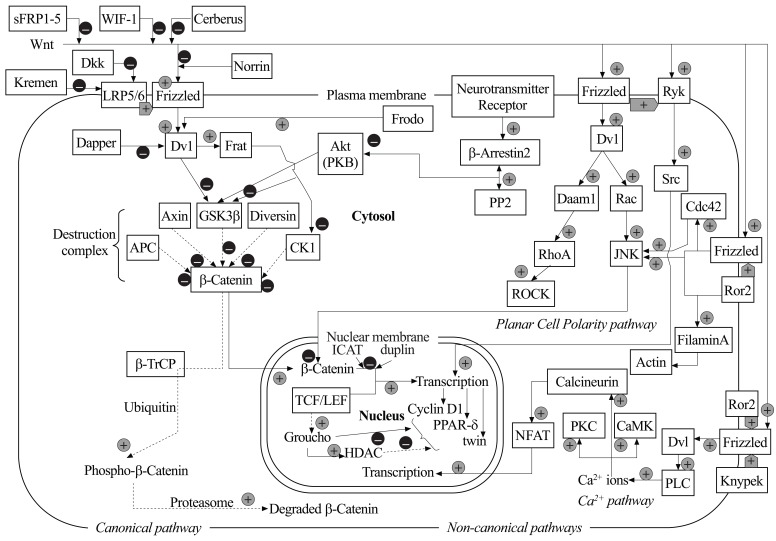Fig. (1).
Schematic drawing of Wnt-related pathways. The canonical pathway depends always on β-catenin, whereas the other, non-canonical pathways may interact with β-catenin–dependent processes, but do not depend on the presence of β-catenin. Different Wnts may have different effects on overall cellular function, depending on the receptors involved and on the availability of co-receptors (LRP, Knypek, Ror2, Ryk etc.) Depicted are also some molecules not strictly belonging to the Wnt pathways, but having a central role in switching on or off β-catenin–regulating steps. Solid arrows in the canonical pathway show events with Wnt stimulating Frizzled; dashed arrows show events occurring in the absence of Wnt. Black arrows for the canonical pathway, grey arrows for the non-canonical; CaMK, calmodulin kinase; CK1, Casein Kinase 1; Dkk, Dickkopf; HDAC, histone deacetylase; Daam1, Disheveled-associated activator of morphogenesis 1; ICAT, Inhibitor of β-catenin and T-cell factor; JNK, Jun kinase; PKB, protein kinase B or Akt; PKC, protein kinase C; PLC, phospholipase Cβ; PP2, protein phosphatase 2A; PPAR-δ, Peroxisome proliferator-activated receptor delta; ROCK, Rho-associated kinase; sFRP1-5, secreted Frizzled-related proteins 1-5; β-TrCP, β-Transducin repeat Containing Protein; WIF-1, Wnt-inhibiting factor 1; +, enhancement, activation; –, down-regulation, inhibition.

